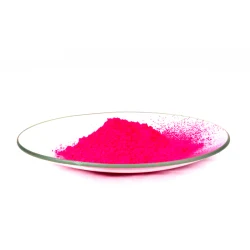Here are key features and characteristics of direct dyes
2024-01-20
Direct dyes are a type of water-soluble dye that is used to color textiles. Unlike some other classes of dyes, direct dyes do not require the use of a mordant to fix the color to the fabric. They are known for their simplicity of use, cost-effectiveness, and the ability to dye natural fibers directly.
Here are key features and characteristics of direct dyes:
1. Water Solubility:
- Direct dyes are water-soluble, which means they can be easily dissolved in water for application to textiles.
2. Application to Natural Fibers:
- They are primarily used for dyeing natural fibers such as cotton, linen, silk, and wool.
- Direct dyes can also be used on cellulosic blends (blends of natural fibers).
3. No Mordant Required:
- Unlike other dye classes such as reactive dyes or acid dyes, direct dyes do not require a mordant (a substance that helps fix the dye to the fabric).
- The dye molecules are directly absorbed by the fibers without the need for additional chemicals.
4. Application Process:
- Direct dyes are typically applied to textiles through a simple dyeing process.
- The fabric is immersed in a dye bath containing the dissolved direct dye, and the dye molecules penetrate the fibers.
5. Color Range:
- Direct dyes are known for providing a wide range of colors.
- The color palette includes bright and vibrant shades.
6. Dyeing Conditions:
- The dyeing process using direct dyes is often carried out under relatively mild conditions, which can be advantageous for certain types of fabrics.
7. Washfastness:
- Direct dyes are generally less washfast compared to some other dye classes.
- Washing and exposure to light can cause fading over time.
8. Application in Textile Industry:
- Direct dyes have been widely used in the textile industry for dyeing natural fibers for everyday clothing and home textiles.
9. Environmental Considerations:
- While direct dyes are known for their simplicity, they may pose environmental challenges due to potential issues related to wastewater treatment.
- Some efforts have been made to develop more environmentally friendly versions of direct dyes.
10. Challenges:
- Direct dyes may have limitations in terms of color fastness, especially in applications where prolonged exposure to light and repeated washing is expected.
It's important to note that while direct dyes are suitable for certain applications, other dye classes like reactive dyes or vat dyes may be preferred for specific purposes. The choice of dye depends on factors such as the type of fiber being dyed, the desired color characteristics, and the intended use of the dyed material. Additionally, advancements in dyeing technologies and the textile industry have led to the development of improved dye formulations with enhanced performance characteristics.



